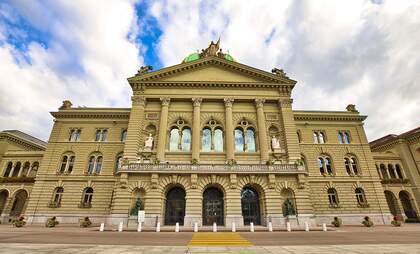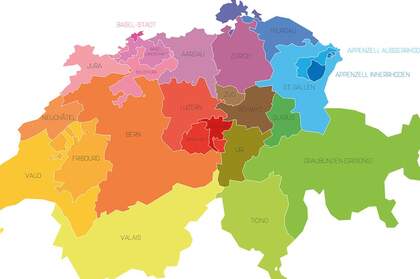One of the most famous parts of Swiss culture is the way that the government is run. The Swiss government is a semi-direct democratic federal republic, guided by the ideal of “government in consensus”. This is where the people of Switzerland elect representatives to the four levels of government, who are then allowed to propose changes to the written constitution or laws.
Uniquely, regular citizens are able to force changes to the law if accepted through a referendum. In addition, if a change to a law is proposed by the government, representatives have the chance to bring the issue to a national referendum through the Swiss system of elections.
How is the Swiss government run?
For most of its history, the majority of political power in Switzerland was given to the local counties (cantons). Until 1848, each canton could have its own currency, foreign policy, military, and laws, with the central government in Bern having little influence over its members. After the Sonderbund War of 1848, it was decided to unite the country into a fully federalised republic with a written constitution, which it remains to this day.
Swiss government structure
Switzerland operates a four-tier system of national government. This includes two bodies from the legislative branch, as well as an executive branch, and a judicial branch. This system takes inspiration from the government of the United States, with several key differences.
Federal Council and the President of the Swiss Confederation (Bundesrat)
Formed in 1848, the Federal Council (Bundesrat) is the executive branch of the Swiss government. The council comprises seven members who reflect the largest political parties in Switzerland. These members are not elected directly by the public but are appointed by both legislative chambers every four years. They are allowed to remain part of their political party, but they must remove themselves from party positions.
The seven council members are then appointed to run each federal department, including the presidency and vice presidency, which are rotated between them every year. It is also their job to give final assent to any changes to the constitution or Swiss laws. Due to the ideal of consensual government, each member must cooperate with the other, regardless of party affiliation. As of 2025, the composition of the chamber is:
- President: Karin Keller-Sutter, FDP
- Vice president: Guy Parmelin, SVP
- Viola Amherd, Centre
- Ignazio Cassis, FDP
- Élisabeth Baume-Schneider, SP
- Beat Jans, SP
- Albert Rösti, SVP
Council of States (upper house)
The Council of States is the upper house of the Swiss government and consists of 46 councillors. Taking its structure from the Tagsatzung of the old Swiss confederation, seats are given by canton and not by population.
This means that cantons are each given two representatives in the upper house, with the exception of the historic half-cantons (Basel-Land, Basel-Stadt, Appenzell Ausserrhoden, Nidwalden, Obwalden, Appenzell Innerrhoden) who only receive one. This leads to over and underrepresentation, with one councillor from Canton Zurich representing over 700.000 people, and the member for Uri only representing 18.000.
Candidates for the Council of States are elected by the method chosen by each canton separately. These representatives serve for four years and are free to form a governing coalition, excluding other political parties, but tend to avoid it. The main purpose of this body is to analyse and propose amendments to legislation crafted via referendum or lower house.
National Council (lower house)
The National Council is the lower house of Switzerland, comprising 200 elected members. The number of seats allocated is determined by the population of the canton, like the House of Representatives in the United States. Candidates are elected through proportional representation within their canton of residence. The purpose of this council is to deliver basic legislation on national issues.
Legislation can come from a referendum or from a proposal from one of the parties. However, these proposals can be put to a referendum if a party in the chamber thinks it necessary.
Federal Supreme Court
The final branch of the federal government is the Supreme Court or judicial branch. This branch is elected by a joint session of both houses and is tasked with upholding the laws decided upon by the government. Some of the main functions that the court is tasked with are:
- Enforcing federal, international, and inter-cantonal law
- Upholding cantonal rights
- Upholding the autonomy of municipalities
- Enforcing political rights
Cantonal government structure (Kantonsrat)
Alongside the federal government, each canton has its own chamber where local decisions can be made. The system of elections is determined by the canton itself, although most choose a proportional representation system. This body is tasked with funding local infrastructure, public transport, utilities, and other services, as well as proposing cantonal referendums.
Local government (Gemeinderat)
Alongside your cantonal authorities, your local council (Gemeinde) will have its own elected assembly. The Gemeinderat is elected within the community for specific roles such as president, head of the school board, and so on. These members are elected for a term decided upon by the council itself and can only be elected by the residents of the area. This is also where local referenda are proposed and submitted.





